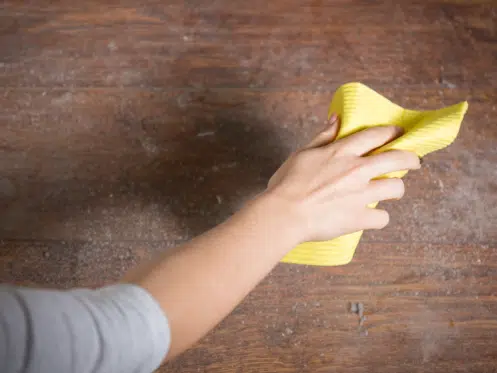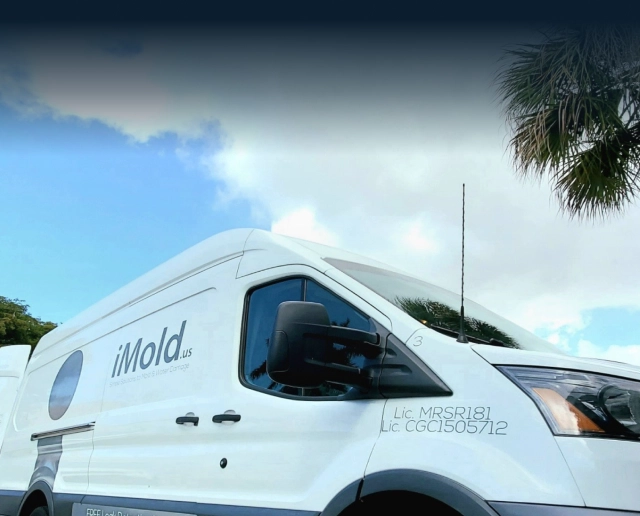Dust vs. Mold
Dust seems to appear on its own, seemingly overnight. It’s suddenly all over your house, but where did it come from? What if that dust is mold growth? Learning to distinguish dust vs. mold is essential knowledge for any homeowner since the two can often look alike. However, there are several ways you can tell the difference. Read to learn the difference between dust and mold and how to treat both.
What is Mold?
The most significant difference between dust vs. mold is that mold is a living organism. Like mushrooms and yeast, mold is a type of fungus that thrives in a humid environment with a food source. When it comes to your home, that food source is often within the structure, like drywall, wood beams, and carpet. Its spores spread through the air, in the water, and even on your shoes, clothing, and pets. Because we live in a high-humidity environment here in Florida, our homes are more susceptible to mold problems. When mold spores enter your home, they can lie dormant until an opportune moment – like water damage or a leaky roof – before they strike. At that point, it’s only a matter of a few days before you have a mold problem. You can find mold almost anywhere in your home, and it can cause the most damage in places you can’t see every day.
What is Dust?
Unlike mold, dust is a combination of solid particles that aren’t living. That means that dust can’t grow and multiply like mold, but it can still be a nuisance. Most household dust consists of several things that come from outside and inside your home. For example, even if you take your shoes off at the door, you still track dirt on your shoes and clothes. Enjoying a wood-burning fireplace on a cold evening also contributes to dusty piles around the house. However, a significant component of dust is dead skin cells, dust mites, and other nasty things that you’d rather not think about. Although gross, dust isn’t harmful but can irritate those with asthma and allergies.
Dealing with Dust vs. Mold
While some types of mold can look like dust, especially to those unfamiliar with mold infestations, they each require a different approach. Most importantly, dust isn’t dangerous to deal with. It’s as easy as wiping it away or trapping it with a duster. The easiest way to differentiate between dust vs. mold is to remember the dust settles on the top of a surface and never under it. Dust particles float through the air, while mold attaches itself and grows to any type of surface.
Dust
You can take several different approaches to reduce and prevent dust around your home. There’s no way to get rid of it for good, but you can make the job a bit easier on yourself. Start by cleaning up the dust from every surface. Everyone prefers a different technique, but eliminating the dust is a good start. Then you can consider air filters and purifiers to remove dust from the air and stop it from circulating. Purifiers and dehumidifiers can also help prevent mold by reducing the likelihood of condensation and increasing air quality indoors.
Mold
If you have any suspicion or signs of mold, the best thing you can do is to contact a mold removal specialist immediately. Remember that mold might come with a musty smell and look more uniform than dust does. Trying to take care of mold on your own isn’t just dangerous to your health, but it can also cause the problem to multiply. Since mold spores can spread through the air, you can’t simply wipe them away like you would with dust. If you do, you only end up spreading spores throughout the air and causing mold to come back. Those spores cause allergy-like reactions for you and your family, ranging from sneezing and watery eyes to respiratory problems.
Mold removal and remediation experts like iMold are trained to recognize signs of mold, even before it can spread. They can also detect mold behind walls that you can’t see for yourself. After identifying the source and cause of the mold infestation, your mold specialist will use industrial-strength cleaners that kill mold at its source and prevent it from ever coming back. Next, licensed technicians will isolate the infested area, preventing mold from spreading and protecting the rest of your home.
Still not sure if it’s dust or mold? You can always contact a mold inspector, who can provide you with a report and estimate for remediation work. They can identify the source of your mold problem, whether it’s a leaky water heater or high moisture levels. Eliminating mold as soon as you notice it is your best chance at lower repair costs and reducing further damage from mold. Unfortunately, it never goes away on its own and will spread to other areas while damaging most materials in its way. Take care of your mold problem now so you can breathe easier and keep your home in its best condition.
Follow iMold on Facebook and Instagram for more mold facts!

